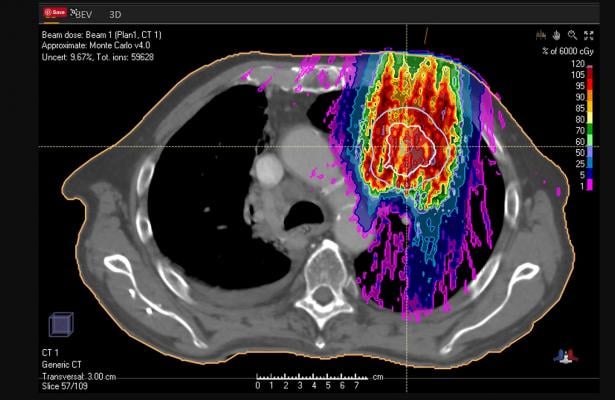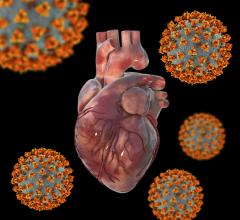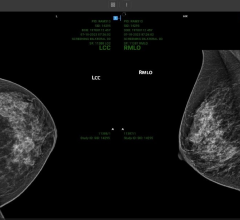
July 17, 2019 — The International Association for the Study of Lung Cancer (IASLC), Guardant Health, the Global Lung Cancer Coalition (GLCC) and AstraZeneca announced the Lung Ambition Alliance, a new partnership with a bold ambition to eliminate lung cancer as a cause of death. The first goal of the alliance will be to double five-year survival for patients with lung cancer by 2025.
Every 18 seconds, a life is lost to lung cancer.1 In 2018 alone, approximately 1.8 million people died from the disease.1 Forty percent of patients are diagnosed when the cancer has already spread beyond the lung and their prognosis has worsened.2 Currently, only one in five lung cancer patients are alive five years after diagnosis.3
Jesme Fox, secretary for GLCC, said: “The Lung Ambition Alliance has been created at a pivotal time for lung cancer. Scientific advances are enabling new possibilities to transform diagnosis, treatment and the management of the disease. Yet barriers remain to improving and accelerating care. As members of the lung cancer community, we have a responsibility to come together with urgency to advocate for and advance the best solutions for patients.”
The alliance represents a broad range of complementary expertise, including research and education (IASLC), diagnostics (Guardant Health), patient advocacy (GLCC), and medicines research and development (AstraZeneca).
The founding partners have identified three priorities: increasing screening and early diagnosis, delivering innovative medicine and improving the quality of care for people with lung cancer. Initial projects being accelerated through the alliance include:
1. The Early Lung Imaging Confederation (ELIC) is a new, cloud-based worldwide screening database designed to accelerate improvements in the multidisciplinary detection and management of early-stage lung cancer. The project capitalizes on growing evidence that computed tomography (CT) screening can lead to reduced mortality.4 This collection of images and data can be used to build better risk models, as well as analysis and detection tools, while serving as a global standard for data quality. In a future phase, artificial intelligence (AI) may be applied to further improve the reliability of clinical decision-support with CT screening. The alliance will contribute to building out the image bank for this IASLC-owned project, first piloted in late 2018, and will assist in measuring patient outcomes to be assessed at various points in the patient journey (including initial scan, initial treatment and follow up).
Giorgio Scagliotti, president of IASLC said: “Effective screening is key to finding and diagnosing lung cancer and other thoracic malignancies early, which can translate to more options and longer survival. Yet screening is underutilized around the world for several reasons. The application of quantitative imaging approaches like ELIC could improve the accuracy and the efficiency of lung cancer screening. Our platform is poised to become an important global resource for lung cancer researchers and care teams looking to expand their knowledge. The Lung Ambition Alliance is providing the focus, expertise, and resources needed to dramatically accelerate the expansion of our data catalogue.”
2. The Major Pathologic Response Project is a collection of clinical trial data and research that can be used to validate surrogate endpoints and identify predictive biomarkers, which may enable better targeting of tumor characteristics. It aims to accelerate development of the next generation of targeted treatments and drive the shift to earlier intervention when there is greater potential for a cure.5 The alliance is assisting in the pooling of data from cooperative groups and across pharmaceutical industry trials, which can be used with health authorities around the world when discussing pivotal trial data.
Amir Ali Talasaz, president and chief operating officer, Guardant Health said: “Precision medicine is improving prognosis for some lung cancer patients and delivering better clinical outcomes. We believe precision medicine approaches can be even more effective when utilized earlier in the course of the disease, or immediately upon detection of relapse. The Major Pathologic Response Project will help accelerate development of potentially curative treatment options, with the identification of surrogate endpoints that can be used to quicken clinical trials and novel diagnostic approaches – like the detection of circulating tumor DNA in blood samples – to identify patients with a poor prognosis, allow routine assessment of therapeutic response, and promote ongoing monitoring of cancer remission.”
3. Initiatives in Lung Cancer Care (ILC2) is an open call anticipated to launch in late 2019, inviting local patient organizations around the world to develop and submit pilot projects that can potentially transform patient care and improve survival at the local level. It aims to help the local lung cancer community benefit from multidisciplinary best practices, educate patients about their options and provide quality-of-life support to patients throughout and following treatment. A Lung Ambition Alliance committee will evaluate and select submissions that have met the selection criteria for funding.
Patrick Connor, VP and global franchise head, tumor drivers and resistance mechanisms, AstraZeneca, said: “Lung cancer is a highly personal disease, and care approaches can vary widely around the world. In order to reach our survival goal, we must encourage initiatives that address barriers at the country level and increase screening and early diagnosis, aid the development of innovative medicine and improve quality care. By joining together with partners who have broad global networks and distinct but complementary areas of focus in lung cancer, we are better positioned to address issues those patients face.”
The alliance will sponsor an international survey, led by Ipsos MORI, to identify local barriers that need priority focus. Results, expected in the fall of 2019, will be used to further refine and shape the priorities of the Lung Ambition Alliance.
For more information: www.lungambitionalliance.org
References
1. World Health Organization. International Agency for Research on Cancer. Fact Sheet – Lung Cancer. Available at http://gco.iarc.fr/today/data/factsheets/cancers/15-Lung-fact-sheet.pdf. Accessed May 2019
2. EpiCast Report: NSCLC Epidemiology Forecast to 2025. GlobalData. 2016.
3. Cancer.Net. Lung Cancer - Non-Small Cell - Statistics. Available at www.cancer.net/cancer-types/lung-cancer-non-small-cell/statistics. Accessed May 2019
4. IASLC. IASLC Successfully Pilots Early Lung Imaging Confederation Project. Available at https://www.iaslc.org/news/iaslc-successfully-pilots-early-lung-imaging-confederation-project-0. Accessed May 2019
5. IASLC. IASLC Pathology Committee. Available at https://www.iaslc.org/research-education/iaslc-pathology-committee. Accessed May 2019


 April 16, 2024
April 16, 2024 








